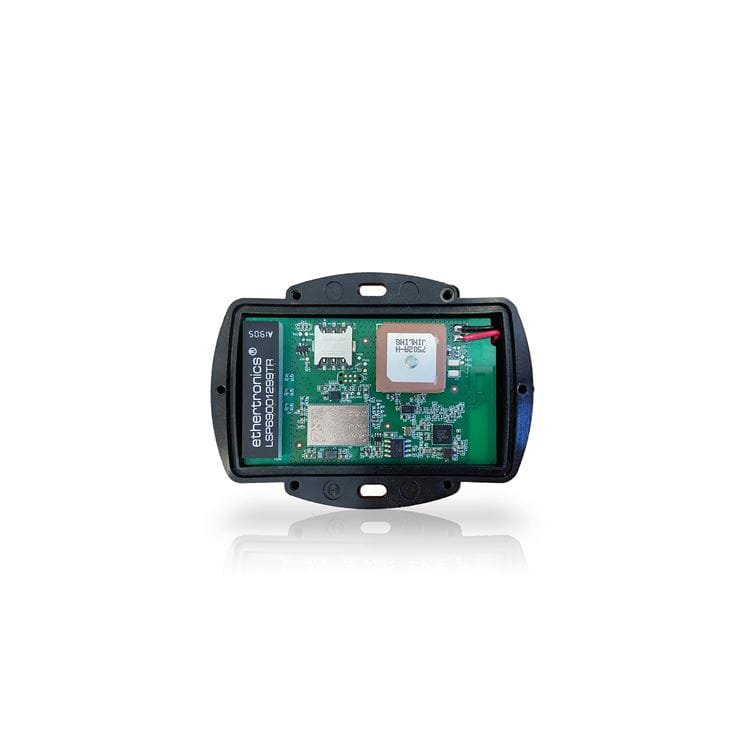Transportation
Helping you build a smart transportation solution to cut congestion and pollution

Nordic Semiconductor today announces that IoT technology company, Digital Matter, is using Nordic’s nRF9160 low power System-in-Package (SiP) with integrated LTE-M/NB-IoT modem and GPS in its ‘Yabby Edge Cellular’ indoor/outdoor asset tracking and management solution. Yabby Edge Cellular is a compact, lightweight, cellular LTE-M/NB-IoT geolocation device with IP67-rated weatherproof, ultra-rugged housing and multiple installation options for covertly securing the product to the assets being monitored. The asset tracker features a 3-axis accelerometer to intelligently detect movement and impact events.
Yabby Edge Cellular uses the Global Navigation Satellite System (GNSS) including GPS and BeiDou, combined with Wi-Fi positioning in the absence of a GNSS signal, enabling continuous location tracking, traceability, loss/theft prevention, and movement/impact detection of assets that frequently move between indoor and outdoor locations. The GNSS technology uses an Almanac file for assisted scans, with this file easily downloaded to the device via the cellular network. When no GNSS or Wi-Fi signal is available, cellular IoT connectivity enables location/position monitoring of assets. Tracked assets include pallets, containers, medical equipment, and livestock. Nordic’s nRF9160 SiP runs the proprietary software and algorithms that manage and perform the GNSS/Wi-Fi location lookups, and interfaces to the accelerometer for movement and high g-force (impact) events.

The Yabby Edge Cellular periodically transmits the whereabouts of the tracked item to Digital Matter’s ‘OEM Device Server’ Cloud-based platform via the cellular network. Stationary devices enter sleep mode until movement occurs to conserve battery life and limit data transfers. The Yabby Edge Cellular can also be managed using the Cloud platform, which allows resellers to manage and update all their devices over-the-air. The Nordic SiP supports over-the-air device firmware updates (OTA-DFUs) and remote debugging and parameter editing, as well as other device management functions.
The tracker achieves battery life of up to 10 years at once-daily position updates, or two years of battery life at once-hourly position updates. This represents around five times the battery life of the product’s previous iteration, ‘Yabby GPS’, according to the company. Combined with the advanced Cloud-based calculations, Yabby Edge Cellular’s significantly reduced power consumption is achieved thanks in part to the ultra low power characteristics of the Nordic SiP. The nRF9160 SiP is optimized for low power operation, supporting PSM and eDRX power saving modes. For example, in PSM mode, uploading 1 KB every 12 hours, the average current is 5.5 uA.
The nRF9160 SiP’s 64 MHz Arm™ Cortex®-M33 processor provides sufficient computational power to not only run the LTE-M/NB-IoT cellular connectivity but also other product functionality. The 1MB Flash and 256KB RAM supports complex application software and enables rapid response to location requests. The Yabby Edge Cellular takes advantage of the nRF9160’s compact dimensions (10 by 16 by 1mm) to incorporate the SiP along with Wi-Fi, cellular, and GPS antennas, three user-replaceable Alkaline or Lithium AAA batteries, and a diagnostic LED indicator for operation status, into a device measuring 85 by 63 by 24mm and weighing 88g.
The nRF9160 SiP is certified for global cellular IoT applications, comprising a dedicated application processor and memory, multimode LTE-M/NB-IoT modem with integrated RF front end (RFFE), GPS, and power management in a compact package. The SiP incorporates the Arm M33 processor, Flash and RAM, a range of analog and digital peripherals, automated power and clock management, Arm TrustZone® for trusted execution, and Arm CryptoCell™ 310 for application layer security. The processor communicates with the LTE modem through a BSD secure sockets API and supports the application layer protocol (for example CoAP, MQTT or LWM2M) and the application itself. The nRF9160 SiP’s LTE modem supports both SIM and eSIM, offers 700 to 2200 MHz LTE band support, 23 dBm output power, and single pin 50 Ω antenna- and UICC-interfaces. The LTE stack layers L1-L3, IPv4/IPv6, TCP/UDP, TLS/DTLS are part of the modem firmware.
Related products include the nRF9160 DK, a precertified single board development kit and the nRF Connect SDK, a software development kit which includes application layer protocols, application examples, and LTE modem firmware offered as precertified and precompiled downloads.
“The nRF9160’s unique low power features play an absolutely critical role in extending the incredible battery life of Yabby Edge Cellular at even more aggressive tracking parameters for our customers. We spent nine months evaluating cellular modules from six different vendors and chose the Nordic solution primarily due to its low power capabilities,” says Ken Everett, CEO of Digital Matter.
“The LTE-M/NB-IoT cellular functionality provided by Nordic’s nRF9160 SiP makes it easier to build the solution as the amount of upload/download data is not constrained to the same extent as other LPWAN technologies.
“In addition, Nordic’s open development environment including good technical support, example projects and code samples, and the nRF Connect SDK proved highly beneficial in the engineering of our product.”
Helping you build a smart transportation solution to cut congestion and pollution